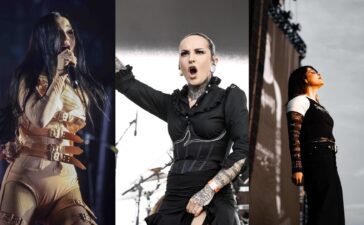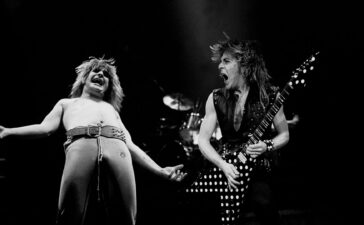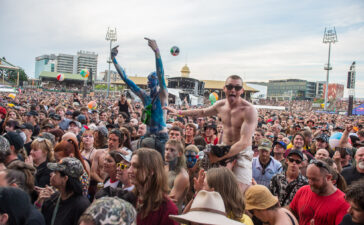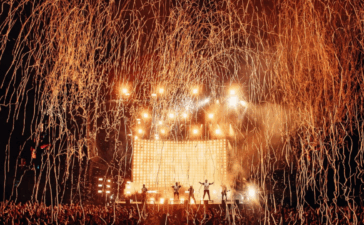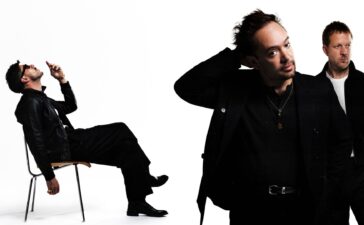As the 21st century enters its twentieth year, the broader subculture of heavy metal hits a similarly frightening milestone – its (roughly) 50th anniversary dominating and terrifying music fans around the globe.
Up until the reflective pieces of the final months of 2019, it was fairly easy to note what the turning points were for the genre, broadly speaking, in each decade.
The 70’s saw the genesis of what we know as heavy metal today, with Black Sabbath emerging from the already experimental waters stirred up by the likes of Led Zeppelin, Pink Floyd and more, positioning the riff and horror imagery of our culture firmly on the pop culture map.
The 80’s was the first time metal reached a critical mass. From Iron Maiden’s seminal classic Number Of The Beast in 1981, to the unexpected bomb of Metallica hitting in ‘83, followed by the dominance of Bay Area thrash, America had joined the party and metal, with all its glorious and polarising sub-genres, was here to stay.
Then came the 90’s – a time of colourful and wacky characters, church burnings in Scandinavia and the out-of-the-blue dominance of nu-metal, seeing the likes of Korn and Limp Bizkit offer their skills to the vacuum left by the rapid rise and subsequent disintegration of grunge.
The 00’s was a line in the sand moment for the genre; Linkin Park’s arrival with Hybrid Theory saw metal fully embrace the hook and take centre stage in the mainstream, dragging the likes of Slipknot and the entire alternative metal movement with it. What would a world without TrapT and Breaking Benjamin be like?
However, the 2010’s (or whatever the hell you want to call them), have been much harder to define. We haven’t seen the emergence of any heavy band in the mainstream world in the same way that there has been over past decades. Don’t get us wrong, some incredible bands have surfaced over the last 10 years, with Ghost, Code Orange and Gojira just some of the names carrying the torch for the underground. But that’s exactly what contemporary metal has morphed into in the 2010’s – once again an underground sub-genre, that occasionally gets some love from the publications (lookin’ at you, Deafheaven) but, for the better part, is represented by the ‘heritage’ breakout acts of decades gone by.
As such, it feels like the stage is set for a new metal act to step in and take the world by storm in the 20’s. The best part though? The pop world is right there, waiting for a new dark idol.
If metal didn’t have a particular band represent the genre on the mainstream stage in the 2010’s, it was more than made up for in the imagery and aesthetic repped by some of the world’s biggest pop culture influencers.
Justin Bieber rocking Metallica merch and being a self-confessed Tool fan was only the beginning of the trend of A-listers expressing an unironic love of the metal imagery and aesthetic. Kim Kardashian, Rihanna, Ke$ha and Miley Cyrus are just some of the names that are thrusting heavy music back into the limelight. “It’s just a t-shirt, though”, we can hear you scoff. “Just because you wear a shirt doesn’t mean that more people are going to actually listen to that kind of music.”
Wrong.
The fact that metal is currently the fastest-growing genre on streaming platforms is evident of the influence of seeing the imagery out and about. The impact of celebrities not just on fashion, but the arts in general, is bigger than ever in the interconnected world of social media.
“Metal has again become that rebellious thing,” said Warner vice president Matt Young recently.
“You can see Iron Maiden shirts in H&M, their artwork is becoming iconic. It’s gone away and gotten dangerous again and that’s what makes it cool.”
Even as far as pop stars present themselves, you’d be forgiven for mistaking them for death metal ambassadors. From Billie Eilish’s death metal inspired logo, to the tattooed, dreadlocked world of the dark, aggressive modern hip-hop sounds sweeping the airwaves, everything bar the blast-beats and savage guitar tones is already there.
Indeed, Post Malone’s recent collaboration with Ozzy Osbourne, being the world’s number 5 most-streamed artist teaming up with literally the founding father of the genre, generated huge waves between the two communities. Ozzy noted that it was his “favourite thing since Sabbath” that he’d worked on, and it kicked off the new decade with some vintage guitar tones blaring away on the mainstream airwaves.
Metal became a sleeping giant in the 2010’s – and it’s all the better for it. Its reshaping in the clubs and bars of the metropolitan underground music scene has resulted in more experimentation and potential for sonic excitement than ever before. It feels like it has something to say again – particularly in a moment where rage is being felt by so many.
The recent confirmation and hysteria over Rage Against The Machine’s reunion to headline Coachella, of all festivals, says it all. People love heavy metal music, and are ready to welcome it to the centre stage in the 20’s. The world is, once again, at the feet of the outliers.




